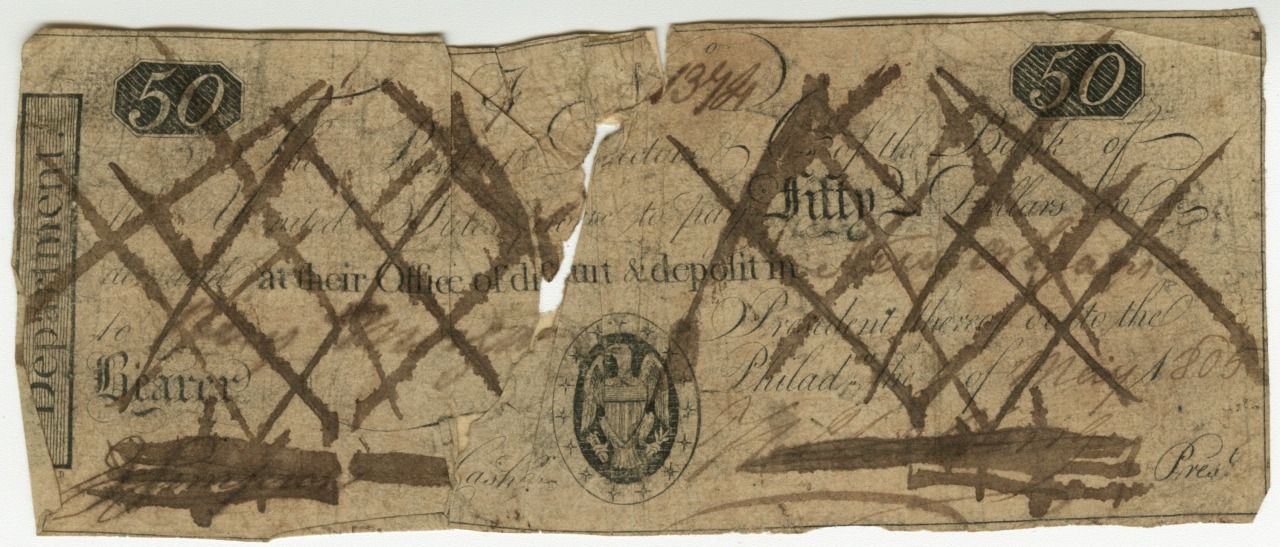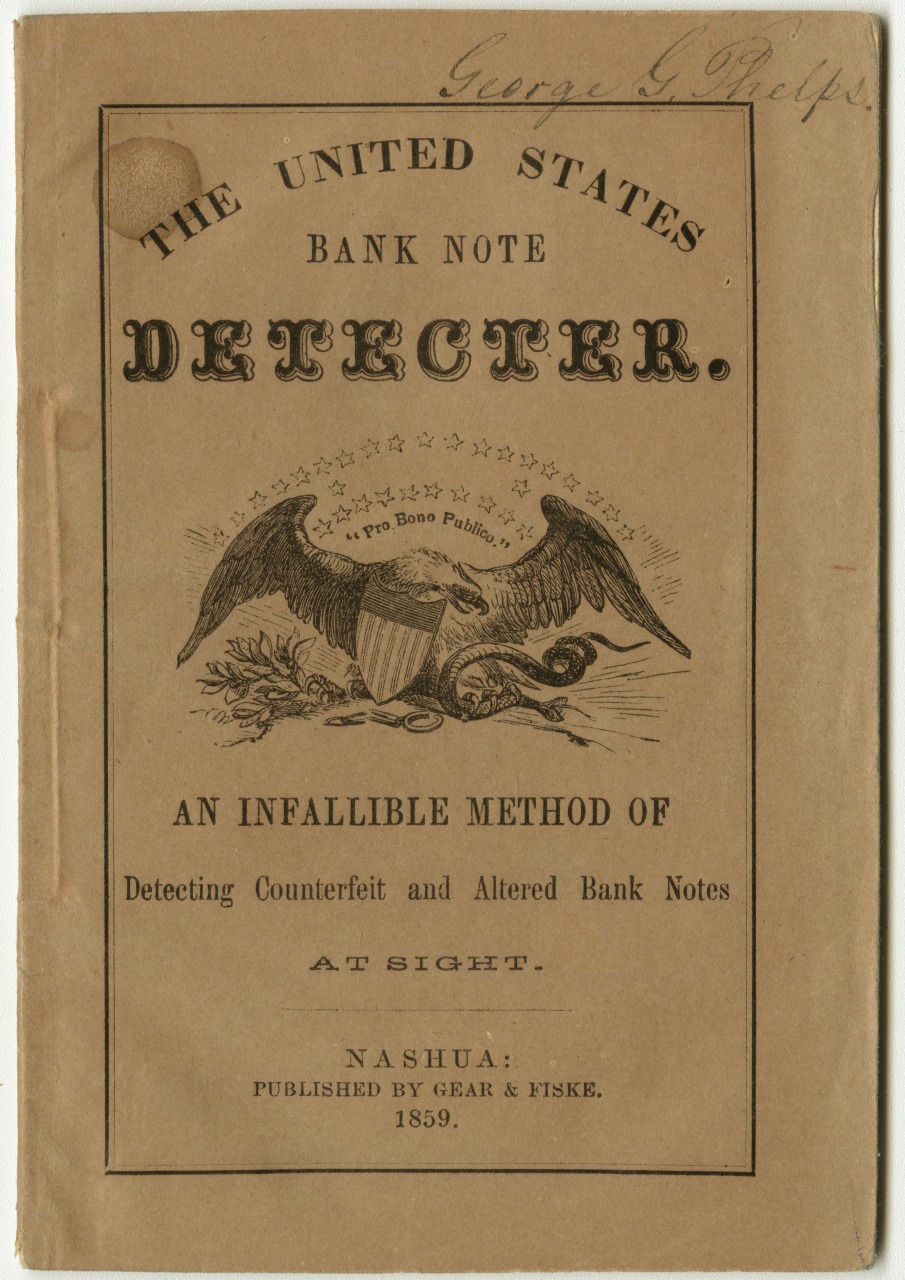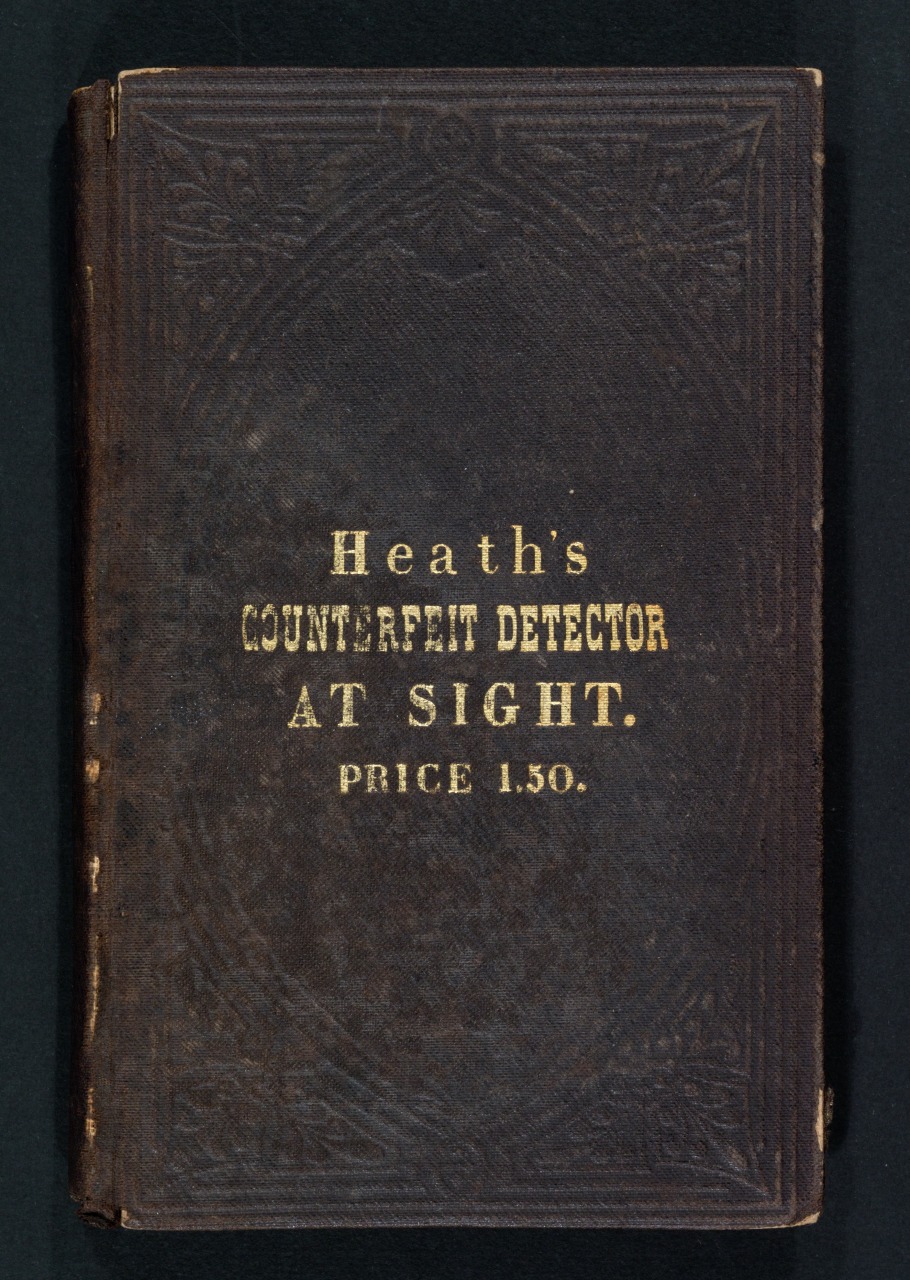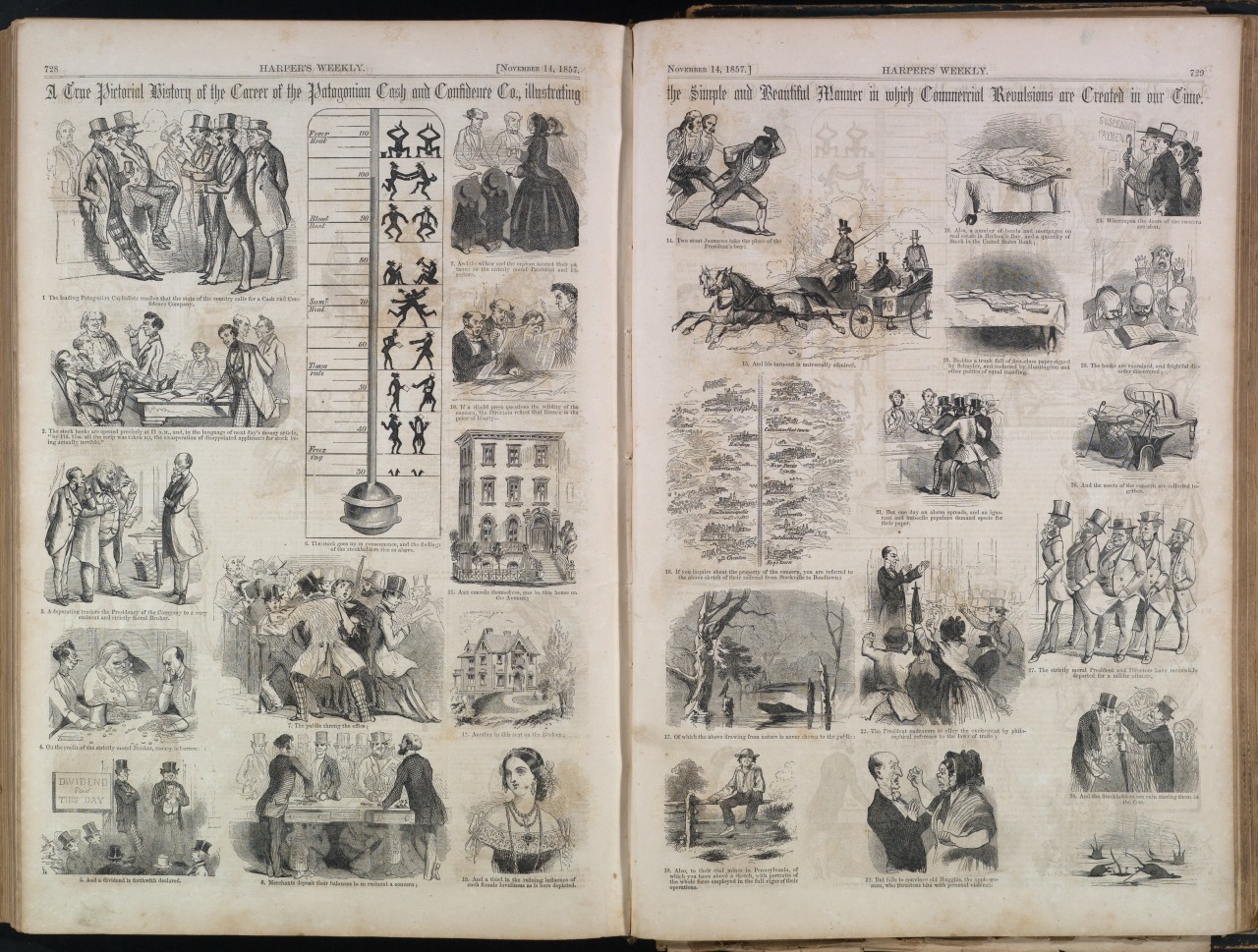“A Nation of Counterfeiters”
In the July 4, 1818, edition of the Niles Weekly Register, editor Hezekiah Niles railed against the proliferation of counterfeit notes in the United States, warning that “we seem about to become liable to be called a nation of counterfeiters!” Niles went on to note that “counterfeiters and false bank notes are so common, that forgery seems to have lost its criminality in the minds of many.” Indeed the problem of counterfeit notes stemmed in large part from the sheer number of banks, public works companies, and railroads all printing their own notes, which made it difficult for a merchant in New Orleans, for example, to know that the 100-dollar Bank of Memphis note he received as payment for goods was in fact a forgery.
By the 1830s the problem had become so severe that some enterprising publishers began producing counterfeit detectors, pamphlets intended to help shopkeepers and bankers identify phony notes. More than eighty such detectors were published prior to 1870, but their use produced mixed results. Some merchants successfully prevented the passing of forged notes, but more often counterfeiters themselves benefited by using the guides’ illustrations—and examples of real bank treasurers’ signatures—to refine their bogus creations.

Counterfeit Bank of the United States fifty-dollar note
between 1805 and 1811; engraving
The Historic New Orleans Collection, MSS 458, folder 3, 81-71-L.16.1This counterfeit fifty-dollar note from the first Bank of the United States was cancelled when presented at the bank’s New Orleans branch.

The United States Banknote Detecter
Nashua, NH: Gear and Fisk, 1859
The Historic New Orleans Collection, 2016.0035

Heath’s Infallible Counterfeit Detector at Sight
by Laban Heath
Boston: L. Heath and A. Williams, 1864
The Historic New Orleans Collection, 76-789-RL

A True Pictorial History of the Career of the Patagonian Cash and Confidence Co., Illustrating the Simple and Beautiful Manner in Which Commercial Revulsions Are Created in Our Time
engraving from Harper’s Weekly
November 14, 1857
The Historic New Orleans Collection, 79-55-L.1
